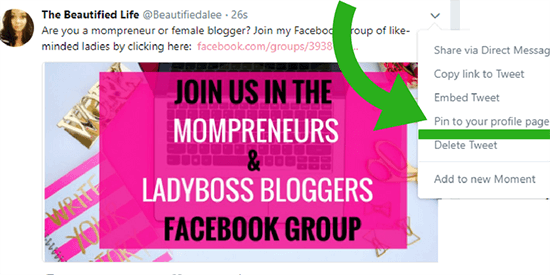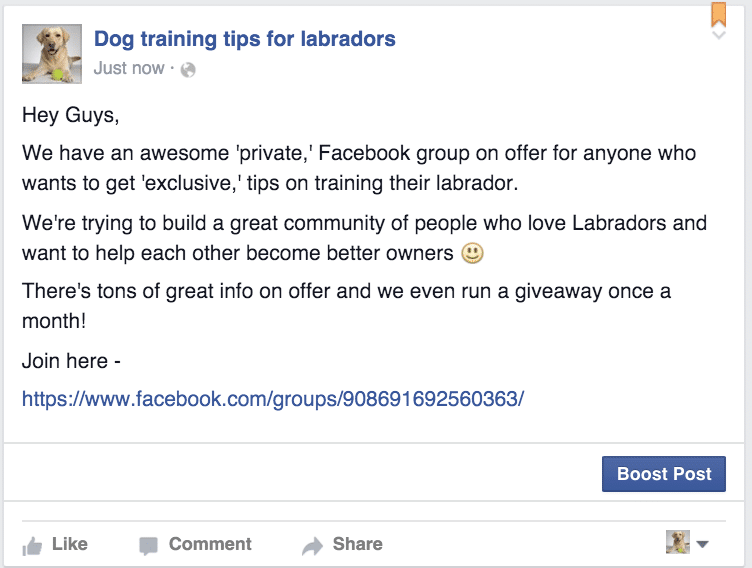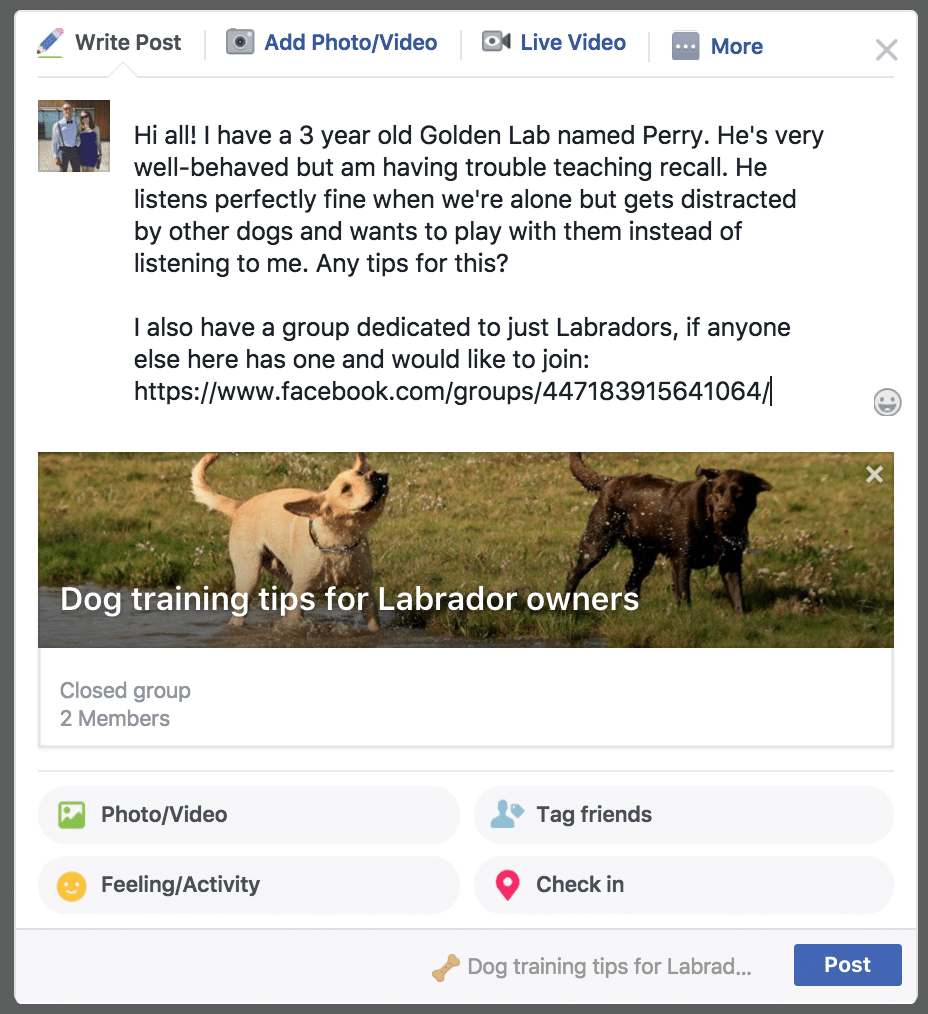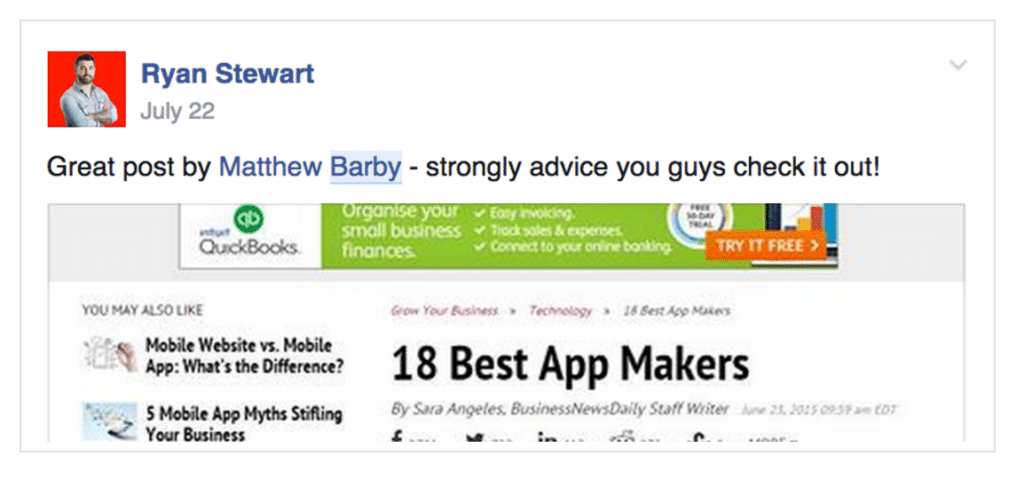
Online communities are powerful engagement tools. That’s why so many Facebook pages use groups to engage with other users. However, getting the word out about your Facebook group can be challenging if you’re trying to grow and reach new members, especially if you want to broaden your horizons beyond your friends list. If you’re trying to grow your Facebook group, here are some effective strategies you need to try in addition to potentially reaching out to a Facebook agency.
Invite Leads through Email or Newsletter
If you’ve already generated a list of leads through ads or customer sign-ups, you can invite them to join your group via email or a weekly newsletter. Since it’s free to join your Facebook group, your leads may be more willing to listen to your message because you’re not selling anything. Additionally, inviting people who have already expressed an interest in your business ensures better chances of adding members who will be valuable to your group.
Your email or newsletter should include a link to your group so users can easily visit it.
Add Your Group URL to Social Media Accounts
You can also promote your group by adding the group URL to your social media accounts. Just because it’s a Facebook group doesn’t mean you can’t use other social platforms to get the word out. You can include the URL in the bio section of your Twitter, LinkedIn, or Instagram profiles. If you want to get creative, you can share an attention-grabbing graphic that includes a link to your group on these other platforms. See this Twitter graphic example by Blogging Wizard.

Add Group URL to Your Website
If you have a website for your brand, business, or blog, why not use it to help promote your Facebook group? You can include a link to your group on the contact page of your site, in a blog post, or even in the main navigation menu. See the following example by Blogging Wizard.

Run Targeted Facebook Ads
If your budget allows it, run targeted Facebook ads to promote your group. This allows you to specify and reach the types of users who would both benefit from and contribute to your group page. Targeted ads will only appear to audiences with the attributes or interests that match what you indicate in the targeting fields of the ad setup.
To ensure your ad only targets users who would be interested in your group, you can create a Lookalike Audience based on people who already like your Facebook page. With a Lookalike Audience, Facebook will deliver your ad to users with locations, demographics, and interests similar to people who like your page. Targeting a Lookalike Audience ensures your ad will only appear to users most likely to be interested in your group.
Post About Your Group on Your Page
An easy (and free) way to promote your group is by posting about it on your Facebook page now and then. Neil Patel suggests waiting until you have about 100 page likes or followers before mentioning your group in a post. When crafting a page post promoting your group, keep these tips in mind:
- Don’t be overly pushy. You can do this by avoiding the use of words in all caps and exclamation points.
- Give users a brief overview of the benefits of joining your group.
- Include a link to join.
- Limit the number of times you post about your group on your page to no more than once a month.
- Don’t overwhelm users with a ton of information. Keep it concise and easy to digest.
The following post is a good example by Neil Patel.

Promote Your Group through Other Groups
Consider turning to other groups for assitance. Some groups prohibit self-promotion or limit it to certain days, so know the rules of the group before you post about yours. You also don’t want to get banned for posting too much spammy, self-promotional content, so only use this option sparingly.
Neil Patel recommends contributing at least three to five posts to a group before sharing a self-promotional post. This could be in the form of comments on another member’s post, likes, or shares. Your group should see you as a valuable member, not an intrusive marketer.
Once you establish yourself as an active group member, promote your group by including a genuine question with a brief mention of your group. Neil Patel offers the following example to show how to take this approach.

Ask Other Group Members to Promote Your Group
Once you’ve built up a good rapport with members in other groups, you can ask them to spread the word about yours. The best approach is to ask one of the group’s founding members or admins if they would be willing to share a post mentioning your group. Don’t get too picky telling them exactly what to say. Simply share your group’s link and let them know you’d appreciate any assistance they are able to provide in letting others know about it.
You can also ask members within your group to spread the word on their Facebook pages. This can help bolster your group’s reputation with a trustworthy approach. Users are more likely to believe other users who praise your group.
Invite Influencers to Join Your Group
Users trust influencers because although they work with brands and businesses, they are best known for their social status. If a major influencer decides to join your Facebook group, other users will want to go where the cool kids are. Keep in mind that the influencers you invite should have a reputation that is relevant to your group. For example, if your group is focused on country music buffs, invite an influencer widely known in country music circles.
To get influencers’ attention, share their content and tag them in the post. Neil Patel uses the following example:

Once you’ve given these growth strategies a try, you may find your group begins to expand at a rapid pace. When this happens, it’s easy to fall into a disorganized fluster. To get control over your Facebook group, give these seven secrets a try.
